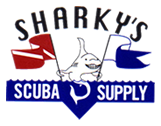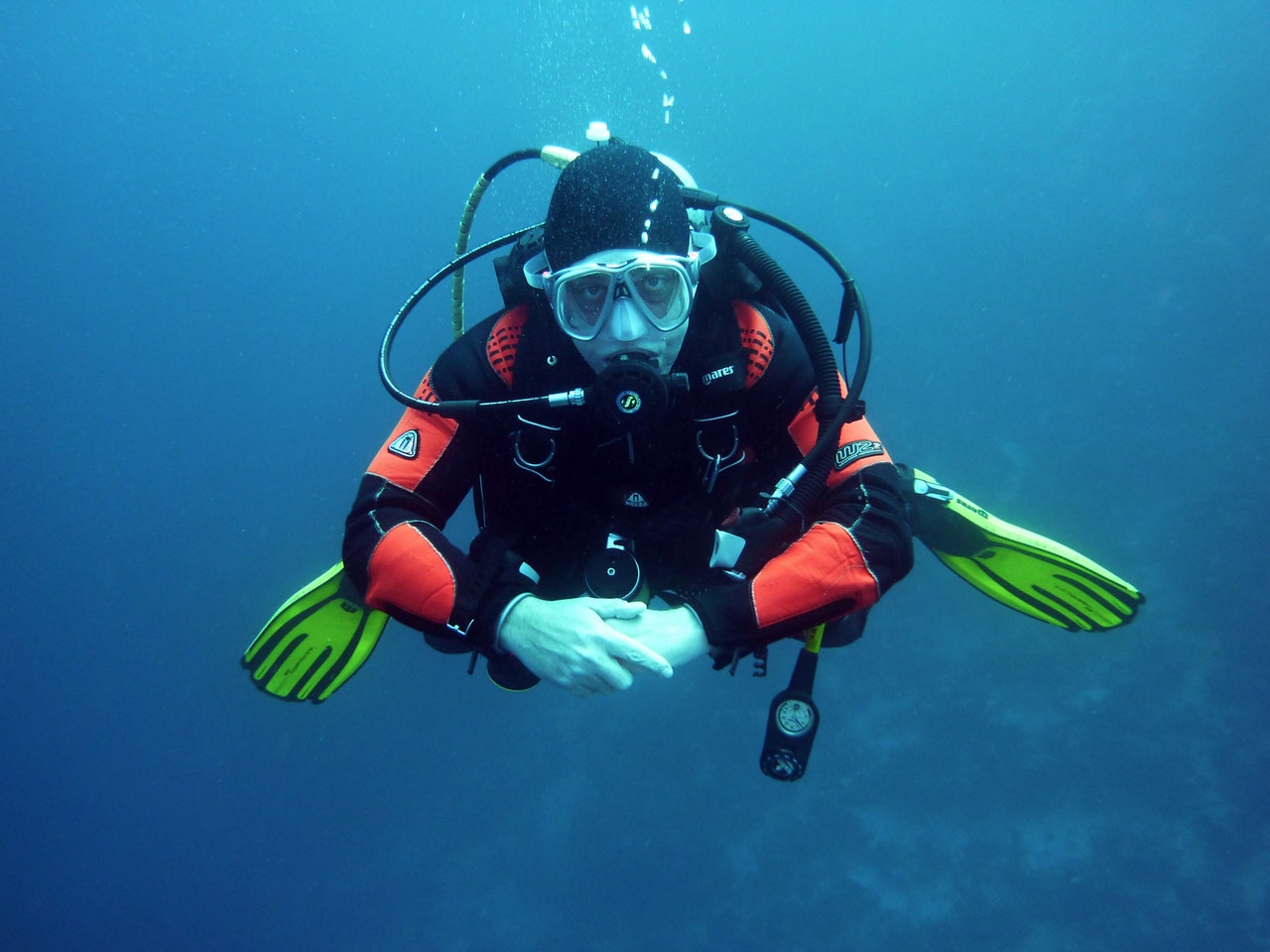Are you new to diving and not entirely sure about all of the new dive equipment?
Here is Sharky Scuba’s Equipment Guide, where we will tell you all about the gear and equipment that you will need for successful diving. Between this guide and the advice of your instructor, you’ll be ready to take that gear underwater in no time!
Consider buying your equipment in two phases. The first phase would be buying the basic gear that you need for diving class. The second phase includes buying the major pieces of life support like the regulator, BC and dive computer. You can buy the life support pieces once you are certified.
Listed below are the pieces of equipment that will become familiar to you and a quick summary of their functions.
1). BCD
BCD stands for “Buoyancy Control Device,” and is otherwise known as BC, or “Buoyancy Compensator.” This is the vest that holds the tank, and is used to control buoyancy. Depending on the brand and type of BCD you have, there are varying features that control the buoyancy.
The typical BCD contains an inflator and deflator mechanism. These functions serve their purposes by adding or releasing air to and from the BCD. They are located on a hose that is connected to your left shoulder.
Most BCDs have a few pockets and D-rings for carrying important gadgets on your dive. Some also have additional weight pockets.
This device comes in different forms and shapes: jacket-types and wing-types. The jacket design is most popular for its great comfort underwater and on the surface. The wing-type BCD offers better buoyancy and enables a perfectly horizontal position during the dive.
2). Regulators
The regulators are a set of devices that consist of:
- A 1st stage, which is mounted on the tank valve
- A 2nd stage that involves two regulators: a pressure gauge and a low-pressure inflator hose that are both attached to the BCD inflator device
The regulators have both a primary and an alternative source of air. The alternate air source is for emergencies or when a back-up is needed on a dive, for either you or your buddy.
A modern regulator is a demand valve regulator. This means that it gives you air when you want it. When you inhale, air moves from the tank through the 1st stage to the 2nd stage, which supplies air to you. The pressure gauges show how much air is in the tank and usually has an indicative caution area to warn you when your air is getting low.
3). Suits
Keeping yourself warm underwater is quite different from keeping yourself warm above the surface. While diving, your body needs protection because water conducts heat twenty times faster than air does.
Wetsuits are used for diving in warmer water. The neoprene material keeps the body warm by sealing the water around the body. It is then heated by the body, the degree of which depends on the thickness and length of the wetsuit.
Drysuits are used most frequently when diving into cold water. These are airtight suits that keep the body dry during the entire dive. These suits act as incubators and keep the warmth against your body.
These masks serve the purpose of helping you maintain your view while diving. These masks are made out of tempered plastic and include a seal around the face that is composed of silicone. Masks come in any size needed, from small to large with extended vision. Some masks even have valves to help empty out excess water.
When you go about selecting a mask, the most important thing to consider is the face seal. If a mask’s seal doesn’t work properly, then water can seep inside. This annoyance is one less thing that you need during your dive, so make sure to buy a good quality mask. Don’t assume that by spending a lot of money on mask, that you will be guaranteed a higher quality.
5). Snorkels
Not every diver uses a snorkel, but it’s not a bad idea to have one available to use. On a long surface swim, you can swim more efficiently while using the snorkel, and it will help you to save your air for the actual dive. If you come across something amazing, you can put the face of the snorkel down to take a better look, even if you’re out of air.
Snorkels come in different types, ranging from basic tubes with a mouthpiece to snorkels that can be folded up and placed into the BCD pocket. Many modern snorkels come with valves in the bottom to make it easier and quicker to empty water out from your snorkel.
6). Fins
When on a dive, you want to be able to move through the water with ease, meaning that you won’t use up a lot of energy or have any difficulty while cutting through the water. Fins vary in shape, form and brand, and are commonly used by scuba divers. There are two types of fins: Open-heel fins, and full-foot fins.
Full-foot fins fit completely around your foot, as the name suggests. The foot pocket is made of a soft rubber that is the most comfortable to wear on any duration of a dive. The snug fit makes them perfect for swimming, as well. However, these fins might not be advisable for use on cold-water dives.
Open-heeled fins are, also as the name suggests, open at the heel. A strap secures them in place. Boots are often used with this type of heel to protect your foot while underwater. This fin provides better protection against cold water, as well as cuts. These are most commonly used for diving, as they offer great protection while still giving you full utility of your feet and legs.
7). Scuba Tank
This cylinder is what provides a high-pressure breathing gas that is required in any set of scuba gear. The gas goes to the diver via the demand valve on the diving regulator or the breathing loop of a diving re-breather. They can also be used for surface-supplied diving, either as a decompression gas or as an emergency gas supply.
These devices are usually manufactured from aluminum or steel alloys. They are typically outfitted with two types of cylinder valves for the filling of the tank and its connection to the regulator.
8). Accessories
The diving industry has tons of awesome accessories for enthusiastic divers who are into useful or flashy gadgets. Diving knives, lights, gloves, UW communication gear, photo gear, SMBs, rings, hooks, extra pockets, tank bangers, pointers, scooters, heated wetsuits, computers…the list goes on and on.

